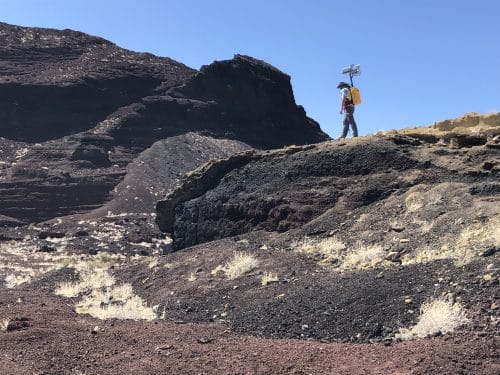NASA researchers and commercial partners have created a remote-sensing mapping technology that will aid explorers in the lunar South Pole’s airless wastes.
The Kinematic Navigation and Cartography Knapsack (KNaCK) is a mobile lidar scanner, which measures range. It uses a new sort of lidar called frequency modulated continuous wave (FMCW) lidar to offer Doppler velocity and range for millions of measurement points per second, and it’s worn like a hiker’s backpack. These measurement points constitute a real-time navigation system for the explorer, producing a 3D “point cloud” or high-resolution representation of the terrain.

“Basically, the sensor is a surveying tool for both navigation and science mapping, able to create ultra-high-resolution 3D maps at centimeter-level precision and give them a rich scientific context,” says Michael Zanetti, a NASA planetary scientist at NASA’s Marshall Space Flight Center. “It also will help ensure the safety of astronauts and rover vehicles in a GPS-denied environment such as the Moon, identifying actual distances to far-off landmarks and showing explorers in real time how far they’ve come and how far is left to go to reach their destination.”
Explorers could precisely map the topography of the landscape, including deep ravines, mountains, and caves, using KNaCK during rover excursions and when exploring on foot. Lidar can even work in complete darkness, saving astronauts the trouble of lugging around cumbersome lighting gear.
“As human beings, we tend to orient ourselves based on landmarks – a specific building, a grove of trees,” Zanetti said. “Those things don’t exist on the Moon. KNaCK will continuously enable explorers traversing the surface to determine their movement, direction, and orientation to distant peaks or to their base of operations. They can even mark specific sites where they found some unique mineral or rock formation, so others can easily return for further study.”
The KNaCK team will then work to reduce the size of the hardware (the backpack prototype weighs around 40 pounds) and harden the delicate electronics to withstand the harsh effects of microgravity and solar radiation.






